- Home
- Raymond E. Feist
Midkemia Page 2
Midkemia Read online
Page 2
During the early days of the reign of King Borric, these Serpent Priests again arose to plague the Kingdom with another plot, and began another bid to take Sethanon and the Lifestone.
The Pantathians had discovered a rift to the world of Shila, home to a race of lizardlike beings, the Saaur. The Pantathians betrayed the Saaur, unleashing a demon host on their world, eventually forcing the Saaur to flee to Midkemia. Their participation on behalf of a demon disguised as a human, the Emerald Queen, led to the bloodiest of conflicts in recent history, and the destruction of much of the Principality of Krondor. When the deception was unmasked, the Saaur quit the struggle, and the invading host was stopped at the legendary Battle of Nightmare Ridge.
The Dark War
Again an attempt was made to invade Midkemia on behalf of the dark forces seeking to overthrow the calm order of things and install a terror unimaginable over the world. A rift through dimensions this time allowed a race of beings known as the Dasati to invade our universe, on the Tsurani home world Kelewan. They were powerful warriors and deathly priests, and each alone was a match for a half-dozen human warriors or magicians. Only the combined efforts of armies from two worlds held them at bay until my father, Nakor, and I could reach the source of this terror and destroy the passage between worlds, but at a terrible price. The obliteration of the world of Kelewan and most of its inhabitants saved our entire dimension from utter destruction.
These events forever changed my father, for within him dwelled regret beyond imagining at the loss of life and the destruction of ancient cultures. While many Tsurani, Thuril, and other inhabitants of that world were relocated to a safe, new world, four out of five souls perished in that final battle with the Dasati.
THIS IS A MAP OF THE KINGDOM OF THE ISLES, an exact copy of one in the Royal Library at Rillanon. It was a generous gift from King Lyam after I had admired it within his hearing.
The Demon War
The Demon War was a conflict between rival demon kings that unfortunately spilled over into Midkemia, forcing my father and our brother magicians in the Conclave of Shadows to take a hand. It was here two things of note occurred: my mother and brother were lost in the struggle, further driving my father into a place few can imagine, his heart forever in darkness, and our final understanding that every event from before the first Riftwar was but a single conflict in an ongoing struggle between forces nearly unimaginable to mortals. The utter destruction of a large portion of the demons’ realm led to events that culminated in the final struggle.
The Chaos Wars
The Chaos Wars were thought to have been the original struggle between the Blind Gods of the Beginning and those beings who occupied Midkemia, elven-kind and dragons, and the new gods and all who came after: humans, dwarves, and goblins.
At the end of the struggle, we realized that all these conflicts were but part of a seemingly eternal clash between incredible forces with the fate of all reality hanging in the balance. Even then, nothing could have prepared us for what would come after.
My mother returned, at least in a sense, as her memories had been grafted onto another being, and for my father and me it was a difficult time, for here before us stood the exact likeness of one dear to us both, yet one who was really not her. In time we adjusted, and after even more time, we accepted this being, a demon with my mother’s face and mind.
For reasons that will become apparent, the last narration of this chronicle of my father will be mine alone, for my observations are a postscript to his life. Yet much of what my father was lives on in me, or at least that is my hope, for he was and remains one of the most remarkable individuals to have ever lived. I say this as a son filled with pride, but also as a student of history, and feel safe in asserting that every living creature on Midkemia owes their continued existence to my father’s sacrifice.
The maps that follow this section are old, current at the time of the events referred to in the opening section of his chronicle. My father obtained the first map from Macros’s library, and the second was a gift from King Lyam; both are accurate in regard to the continent of Triagia and the Kingdom of the Isles as they existed in my father’s youth.
There are three continents on Midkemia, the largest of which is Triagia, a massive body of land extending far into both hemispheres. Many nations and people call Triagia home, but the two most powerful nations by far are the Kingdom of the Isles to the north, and the Empire of Great Kesh to the south. The island Kingdom of Roldem is notable for its influence in the arts as well as its sizable navy. Its presence has often kept the two larger nations from needless conflict over the years.
—Magnus of Sorcerer’s Isle
Entry, the Second
THE FAR COAST OF THE KINGDOM OF THE ISLES is home to the Duchy of Crydee, the most distant province of the Kingdom. Without magic, travel to Crydee from Rillanon is arduous and lengthy.
Crydee is home to Duke Martin, brother to the King, and his family. It was his father, Borric, a most worthy and just man, who was Duke at the time my story begins.
After some travels, I feel safe in observing that in many ways the Far Coast is a different culture from the rest of the Kingdom of the Isles. Three generations of relative isolation have resulted in a rougher character, less refined, more rustic, and in some ways a character more virtuous than to the east.
Not that men and women of virtue don’t exist to the east, but rather the overriding concerns of other Kingdom nobles—advancement, politics, power, and gain—are absent along the Far Coast. The inhabitants of the Far Coast are more occupied with the daily exigencies of life, and little more.
The Duchy of Crydee is as simple as any in the Kingdom, consisting of three boroughs: Tulan, a barony; Carse, an earldom; and the duchy home itself. If three noble families could be considered close, it would be here, for lacking the constant political bickering common to the East, and relying far more upon one another than any help coming from the rest of the Kingdom, these noble families are more like kin than vassals and lord.
I presume to weigh matters unknown to me at the time, but reassessed by knowledge gained after the fact, but it was only the royal blood of the Duke’s family that conferred any status for Crydee in the Congress of Lords and the royal courts of Rillanon and Krondor. I suspect absent that, Crydee would have been left to linger neglected. As it was, it was greatly left to its own devices until the coming of the Tsurani.
Crydee was both abundant and harsh. It consisted of woodlands and deep forests, mines and meadows, farmland and mountains, rivers and game in profusion. It was a rich land, more than capable of supporting the population there, but it was hardly an idyllic place, for we had neighbors, not all of whom were affable.
To the north dwelled the elves, servants of the Queen, Aglaranna, and to the southeast lived the dwarves, under the command of their chieftain, Dolgan. We lived in peace with these people, rarely passing on their lands, they rarely visiting ours. We occasionally traded with the dwarves, their fine ale bringing a premium, and our seafood being a delicacy to them. The elves were content to keep their own counsel but occasionally welcomed our hunters, most notably the current Duke, Martin, when he was a boy. Of all men in the Kingdom, he perhaps understands the elves most of all.
Not all our neighbors were so affable. We also were cursed with the marauders of the Brotherhood of the Dark Path, as the dark elves were known to us. I later learned they were known as the Moredhel in their own tongue. They were at times served by goblins, foul creatures with wolf-like visages, who raided and killed for sport and sacrifice to dark gods. Trolls and other creatures also troubled us from time to time, so despite Crydee’s bounty, we were forced to be ever vigilant. Add to that the constant threat of predation by lions, bears, wolves, wild dogs, and the occasional wyvern, and it was a foolish traveler to move through the duchy without stout weapon or large company, and who trod anywhere but the King’s Road between Tulan, Carse, and Crydee Keep. Most travel was achieved by ship as all three towns boas
ted welcoming harbors.
Within the boundaries of the towns and villages, and upon the farmsteads, herd, and lumber camps, relative safety was assured, and within the woodlands near those populations as well. But the Green Heart was always dangerous, and its threats became manifest to me personally, as did the perilous foothills of the Grey Tower Mountains to the east of the duchy. A single road from Crydee over the mountains to Yabon and another to the south and over to the Free Cities were the only relatively safe passage, and even then attacks by bandits, as well as the dark elves and others were a constant threat.
THIS MAP OF THE FAR COAST was found in Macros’s library on Sorcerer’s Isle. It is similar to one kept in Duke Borric’s study, though both possess minor inaccuracies. I suspect they were due to the mapmaker’s working from other people’s descriptions rather than firsthand knowledge of a given area. Still, on the whole, this map is reliable enough that a traveler to the Far Coast would have little reason to fear getting lost. Detail is lacking in some places, however; should it not be obvious, areas that appear empty and fringed by trees, such as the Green Heart and north of Elvandar, are in truth heavy forest. A copy of another map from Lord Borric’s study, showing the significant landmarks, trails, roads, and other features of interest of Crydee and the surrounding area, from just before the Tsurani invasion.
As stated, I was a foundling, left on the doorstep of the Abbey of Dala in the foothills of the Grey Tower Mountains. A mendicant order, the monks could not care for me, so they took me to a most remarkable man, Lord Borric conDoin.
Lord Borric possessed many fine qualities, but first among those was a sense of justice and compassion. Without pedigree I could have been pronounced a bond servant, requiring twenty years of service to whoever held my bond before calling my life my own. He judged it far more just to let a bondsman’s child be free than consign a freeborn child to a bond. I was given to Magya, the cook’s wife, to rear, as she just had given birth to a boy, and raising two side by side seemed as natural to her as if she had borne twins. So I was raised as their son, alongside my foster brother, Tomas, due to the generosity of that most remarkable man, Lord Borric conDoin.
As a boy of the keep, I had duties from as early as I can remember. At first my world was the kitchen, for Megar, the cook, and Magya occupied a small room behind the kitchen proper. Tomas and I played at their feet until we were old enough to be given minor chores. I can’t remember a time I didn’t have duties in the kitchen, and my earliest memory is of sneezing from flour dust, followed by one of falling a great deal as I tried to herd chickens back into their roost. I had opened the coop door and set them free by accident.
Washing, peeling, and chopping vegetables, plucking birds, stirring simmering stock, and cleaning every implement and surface in the kitchen became second nature to me. As I write this, it’s been more than two decades since I lived in that kitchen, but I wager I could cook Megar’s seafood chowder from memory this very day.
Given the close quarters of the small room the cook and his wife occupied, at an early age Tomas and I took to sleeping wherever we found ourselves late at night, most often on the kitchen floor near the baking ovens in the winter, or outside during the summer heat. I look back from many years later wondering how I slept so soundly on the stone floor or hard-packed dirt, yet I did.
As I grew, first the keep, then the town of Crydee became familiar, my home ground enlarging as I roamed more at will. Getting into town was a treat for keep boys, as we had very little time to ourselves. We of the keep were self-sufficient in many ways, for the Duke’s taxes often came in the form of livestock, grain, lumber, or stone, but in the town were items that appeared exotic by a young boy’s standards. Cloth from distant lands, which shone in the afternoon sun, exotic spices I rarely encountered in the Duke’s kitchen, and other seemingly novel items, and of course the town girls.
Tomas always caught their eyes. He was tallest among the boys our age and had a confident, easy grace to his manner. He was by any measure a handsome fellow and was easily the best among us at running, climbing, brawling, or any other skill I could name. He was confident he would become a soldier, and to the girls of Crydee that made him a bit dashing, I think.
I, on the other hand, was small and quiet, and any attention I received was only Tomas’s reflected glory. His presence kept me from being bullied a great deal more than I should have endured, and for that I was grateful.
As every boy in Crydee was required, upon my eighth Midsummer’s Day, I began to apprentice or train with various crafts throughout the duchy. This practice had begun with Lord Borric’s grandfather, the first Duke of Crydee, who had quickly come to understand that his newly established duchy lacked enough skilled laborers at harvest, or when it was time to bring the herds down from the alpine meadows before winter, or to help repair storm damage. He decreed that every boy would spend at least a few weeks helping at all the important crafts.
So for five years I would spend one week out of four helping at carpentry, mending fishing nets, stoking the forge, or doing any other task that someday might be my own. Through this process two goals were achieved: masters learned the strengths of boys who would soon stand for Choosing, when all boys age 14 stand to be taken as apprentices by the masters of various crafts—some had no sons of their own, and some boys had elder brothers apprenticing and found no place to work at their father’s side—and we boys were acquainted with the requirements of the various crafts to better enable us to understand where our futures might be best served.
Another consequence of this practice was we learned to appreciate just how difficult various trades and crafts were; what might seem to be trivial or easy in accomplishment was in truth significant or difficult. It raised our appreciation for the skills and abilities of other men and also gave us a better understanding of the roles played by women in our duchy, beyond the more obvious of wife and mother.
The last benefit of this practice was travel, or perhaps exploration would be a better term, for one of the ironies of my life is that while I have ventured to another world, I would never have visited Carse and Tulan save for my stint apprenticing as a wagoner on one occasion and a sailor on another. That is how I first came to travel within Crydee.
I’LL ADMIT TO BEING AMUSED TO DISCOVER that the mapmaker called the road north from Crydee the Great Coast Road, as no one in Crydee called it that. It was an extension of the King’s Road that was never built. Lord Borric’s father attempted to clear away a fair bit of it to aid deep forest lumbering, but given that everything east of the coast hills was patrolled rarely, there was little use of it, and it fell into disrepair, effectively vanishing into the hills to the east of the Yarnor Mine and the village of Buusbers.
Smuggler’s Hole and Faraway are also worthy of a brief mention. Smuggler’s Hole was named after the Duke’s father raided a nest of smugglers who had been utilizing the cove there to move weapons from Kesh up over the Great Northern Mountains to renegade humans and the Brotherhood of the Dark Path.
The Duchy of Crydee, as granted by the Crown to Lord Borric’s grandfather, extends far to the north of where it ends in reality. A colony village, by name Brisa, was established by the second Duke, but it failed in less than two years. While the Kingdom may claim lands as far north as where the Great Northern Mountains meet the sea, in actuality the King’s law ceases at Road’s End. A small garrison town, it is home to a handful of fishermen, farmers, and herdsmen who tend the needs of the tiny garrison, situated halfway between the river known as Rushing Deep, and the Crydee River, known to those of us who live in the duchy as River Boundary, for it is the river that marks the southern limit of the forests that surround Elvandar.
Carse, not Crydee, is the commerce center of the Far Coast. Carse has the best of the three harbors, and the only one suitable for more than two or three deepwater ships. Crydee has a long pier running the north side of the harbor, but it can accommodate one large or two small ships at most. Tulan is situated on a
series of small islands linked by bridges and hand-dug landings for small boats, so all ships must anchor offshore and goods are ferried by barge or shallow draft boat.
My first journey, to Carse, began in the summer just after my ninth year. I was full of excitement as this was to be my first journey outside of Crydee. The days were hot and travel was tedious and the excitement quickly diminished. Still, for a boy of nine the slightest change in scenery held a hint of the exotic.
The Far Coast is unforgiving save for a few stretches near the three main ports. The most notable bluff is a headland west of Crydee known as Sailor’s Grief. The shape of the coast there is deceptive with a rapidly rising shelf just below the surface. More than a few unsuspecting ship’s captains have sailed nearby in a following wind in what seems deep water, only to be pushed onto the rocks by the ocean surge meeting the tide race from the Crydee River.
The rest of the coastline between Crydee and Carse is hardly more forgiving, and where there is a small stretch fit for landing, there is only one village on the shore, the fishing community of Windswept. Other villages like Road Town and Seaside are either on bluffs overlooking the sea or above inaccessible beaches or rocky coasts where landing boats is impossible. Where the beach can be reached from the King’s Road, there is usually a steep, narrow path, little more than an animal trail.
Such natural obstacles have contributed to the rarity of pirate raiding that troubles the western coasts of Kesh and the ports of the Free Cities in the Bitter Sea. The only safe place to come ashore in numbers is within the harbors of Carse and Crydee, and they are well defended. Tulan also offers other problems for attackers.
My first reaction on seeing Carse was that it was a much larger community than Crydee. In my boyish world, Crydee would have to be the superior town, being the home to the Duke and all. As I learned, the original Duke had picked that location as the first defensible position he could seize, allowing reinforcement from the sea, after crossing the Grey Towers in the conquest of what was then Keshian Bosania.

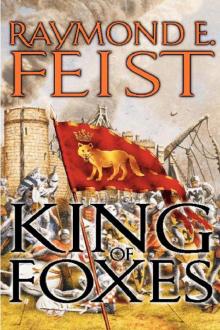 King of Foxes
King of Foxes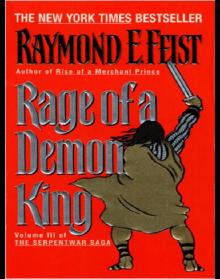 Rage of a Demon King
Rage of a Demon King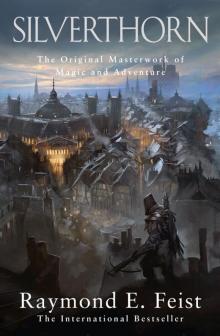 Silverthorn
Silverthorn Rise of a Merchant Prince
Rise of a Merchant Prince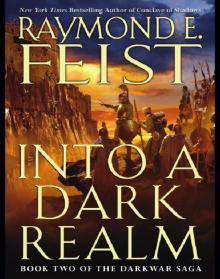 Into a Dark Realm: Book Two of the Darkwar Saga
Into a Dark Realm: Book Two of the Darkwar Saga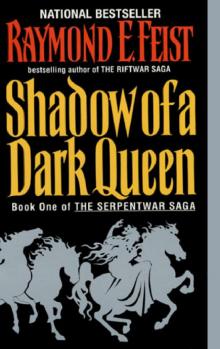 Shadow of a Dark Queen
Shadow of a Dark Queen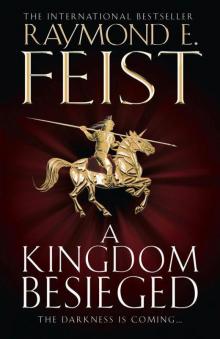 A Kingdom Besieged
A Kingdom Besieged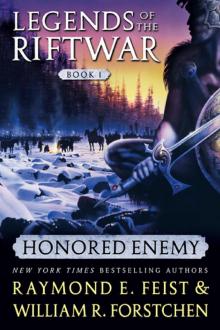 Honored Enemy
Honored Enemy Talon of the Silver Hawk
Talon of the Silver Hawk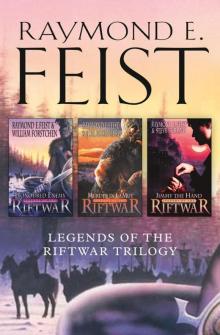 The Complete Legends of the Riftwar Trilogy
The Complete Legends of the Riftwar Trilogy Exile's Return: Conclave of Shadows: Book Three
Exile's Return: Conclave of Shadows: Book Three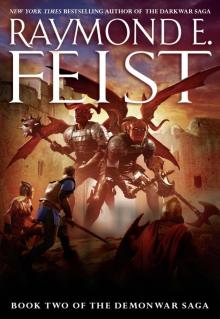 At the Gates of Darkness
At the Gates of Darkness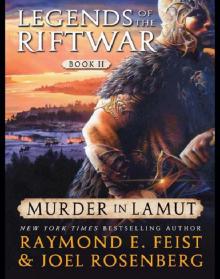 Murder in LaMut: Legends of the Riftwar: Book II
Murder in LaMut: Legends of the Riftwar: Book II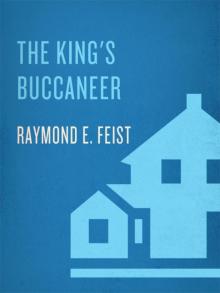 The King's Buccaneer
The King's Buccaneer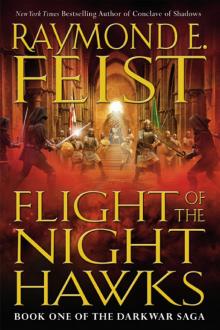 Flight of the Nighthawks
Flight of the Nighthawks The Riftwar Saga
The Riftwar Saga A Darkness at Sethanon
A Darkness at Sethanon Magician: Master
Magician: Master A Crown Imperiled
A Crown Imperiled Magician: Apprentice
Magician: Apprentice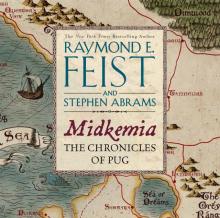 Midkemia
Midkemia Wrath of a Mad God
Wrath of a Mad God Shards of a Broken Crown
Shards of a Broken Crown Magician's End
Magician's End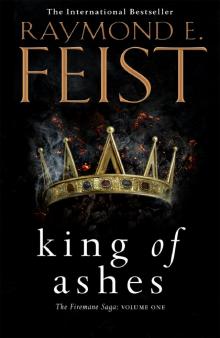 King of Ashes
King of Ashes Jimmy and the Crawler
Jimmy and the Crawler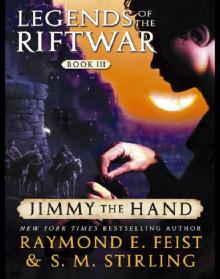 Jimmy the Hand: Legends of the Riftwar, Book 3
Jimmy the Hand: Legends of the Riftwar, Book 3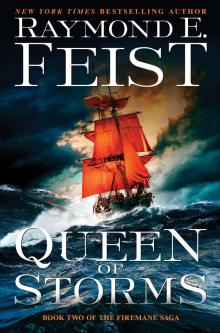 Queen of Storms
Queen of Storms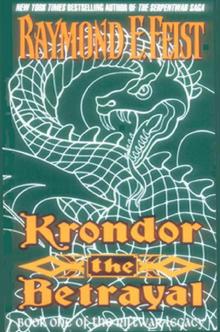 Krondor: The Betrayal
Krondor: The Betrayal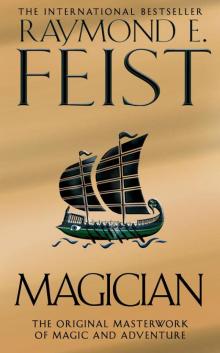 Magician
Magician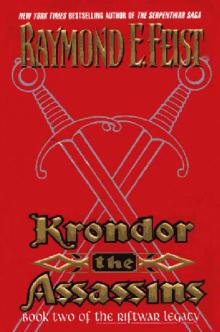 Krondor: The Assassins
Krondor: The Assassins Honoured Enemy
Honoured Enemy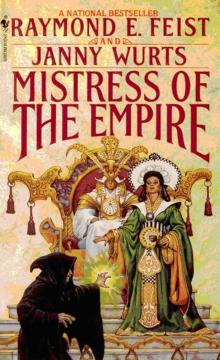 Mistress of the Empire
Mistress of the Empire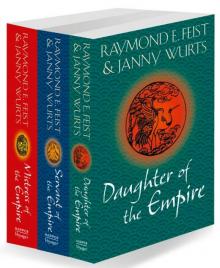 The Complete Empire Trilogy
The Complete Empire Trilogy Legends 1 - Honoured Enemy
Legends 1 - Honoured Enemy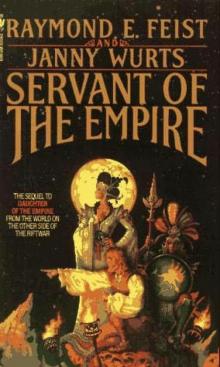 Empire - 02 - Servant Of The Empire
Empire - 02 - Servant Of The Empire Murder In LaMut
Murder In LaMut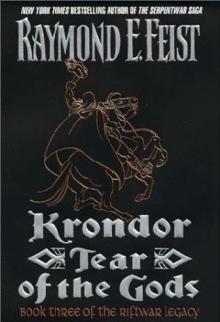 Krondor Tear of the Gods
Krondor Tear of the Gods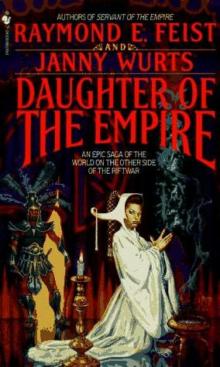 Empire - 01 - Daughter Of The Empire
Empire - 01 - Daughter Of The Empire![King of Ashes [Book One] Read online](http://i1.bookreadfree.com/i1/03/30/king_of_ashes_book_one_preview.jpg) King of Ashes [Book One]
King of Ashes [Book One]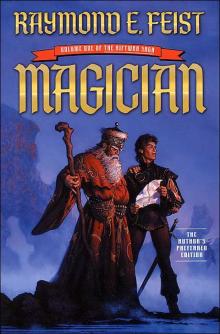 Magician (10th Aniversary Edition)
Magician (10th Aniversary Edition) Prince of the Blood, the King's Buccaneer
Prince of the Blood, the King's Buccaneer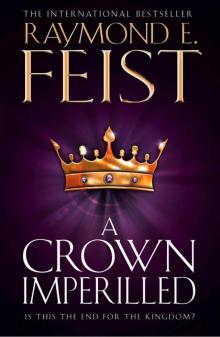 A Crown Imperilled cs-2
A Crown Imperilled cs-2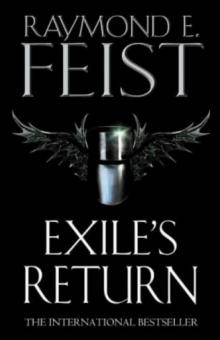 Exile's Return
Exile's Return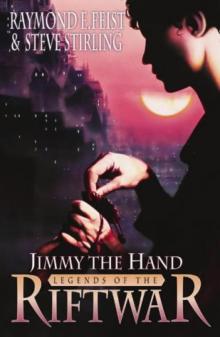 Jimmy the Hand
Jimmy the Hand Book 1 - Magician
Book 1 - Magician Empire - 03 - Mistress Of The Empire
Empire - 03 - Mistress Of The Empire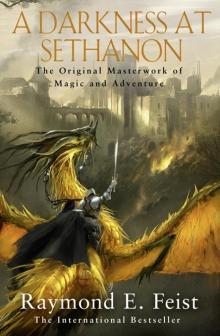 Darkness at Sethanon
Darkness at Sethanon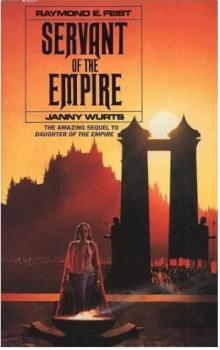 Servant of the Empire
Servant of the Empire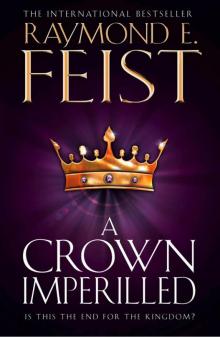 A Crown Imperilled
A Crown Imperilled Rides a Dread Legion
Rides a Dread Legion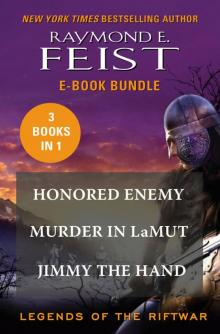 Legends of the Riftwar
Legends of the Riftwar Daughter of the Empire
Daughter of the Empire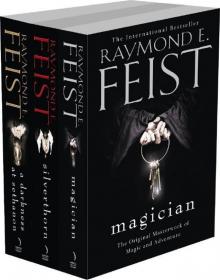 The Riftwar Saga Trilogy: Magician, Silverthorn and A Darkness at Sethanon
The Riftwar Saga Trilogy: Magician, Silverthorn and A Darkness at Sethanon